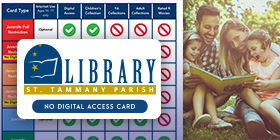One of the many benefits of technology is that it can simplify and automate various activities that humans long performed themselves. The hiring process is one such endeavor. Applicant tracking systems (ATS) have become quite popular among employers seeking to streamline the often time-consuming and burdensome process of recruiting and hiring new workers.
An ATS is a software application that employers use to scan submitted digital resumes and job applications in search of keywords that the employer identifies as relevant. It then sifts the submissions to determine which candidates are likely to be the best match for the position, based on the frequency and context of the keywords in the application materials. Therefore, applicants who submit resumes that the ATS identifies as good matches according to its algorithms are more likely to get the attention of hiring committees and HR departments. But how can applicants make sure that their resume accomplishes that?
Fortunately, there are a number of things that job seekers can do to enhance their resumes to be ATS-friendly. Job search , opens a new windowwebsites, university career, opens a new window counseling centers, opens a new window, and career coaches, opens a new window shed light on the characteristics of resumes that are most likely to clear the ATS hurdle successfully. Below is a compiled list of recommendations.
- Tailor your resume for every job application you submit. If you are applying for positions with different requirements, titles, duties, and so forth, adapt your resume to match each as much as possible.
- If a given employer has posted multiple job listings, don't apply indiscriminately for all of them. ATSs will reveal that. Apply only for the ones for which you are a good match, and make sure to submit a carefully tailored resume to each.
- Identify keywords and exact phrases in the job listing and use them in context throughout your resume. These can include (but are not limited to) skills, qualifications, job titles, degrees, professional certifications, and the like.
- Locate descriptions of the same or similar job roles on sites like LinkedIn to identify other relevant keywords, phrases, and language; include them meaningfully in your resume.
- Look at the employer's website to find relevant keywords and phrases that you can incorporate into your resume to emphasize your fit with the organization.
- Do not include hidden or white text to "stuff" keywords into your resume (for instance, "sales sales sales" when applying for a sales position with a retailer). Such text, while invisible to the human eye, is still readable by ATSs and will be visible on the employer's end.
- Use common section headings that the ATS will identify easily. For instance, "work experience" might not be flashy; but an ATS might not recognize "where I have made an impact" as the section listing your relevant career history.
- Opt for either a chronological or a combination/hybrid resume format instead of a functional format. This makes it easier for an ATS to identify your work history clearly.
- Use simple formatting. Things like columns, text boxes, headers, footers, graphics, tables, images, and so forth can make a visually appealing resume; but they can trip up an ATS and make a mess of the data that is transmitted to an employer. Bulleted lists are fine if you stick with basic bullet points rather than complex symbols.
- Use traditional fonts such as Arial, Helvetica, Times New Roman, or Georgia. Black font in 10 to 12 pt is best for readability. You can use colored fonts, but the data delivered by ATSs is received on the employer's end in black anyway.
- Left align your document using one-inch margins. If necessary, you can go down to half-inch margins; but that's as small as you should go.
- If the job listing indicates a particular desired file format, be sure to submit your resume in that format. Otherwise, save and submit your resume as a .docx file if possible, as that is the universally accepted format for ATSs.
- Spell out words and phrases. Rely solely on abbreviations only if the job listing does so. It's okay to enclose abbreviations in parentheses after the spelled-out terms [for instance, "Certified Financial Planner (CFP)"].
- Write out dates. An ATS is more likely to make sense of February 2022 than of 2/22.
- Opt for numerals (for instance, "8" instead of "eight") if the job listing has done so.
- When completing an online application, fill in every field, even the optional ones, so that the ATS does not discard your application or rate it poorly.
- Consider using tools like JobScan, Resume Worded's Targeted Resume, or SkillSyncer to analyze your resume to make it more ATS-friendly.
Following these tips won't guarantee that you get an offer, but it can increase the likelihood that your resume will be ranked more favorably and thus gain the attention of employers.
Looking for more resume guidance? Take a look below at some of the resources that are available at the St. Tammany Parish Library!
When you're applying for jobs, your resume plays a primary role in getting the attention of employers. Take a look at some of the resources that St. Tammany Parish Library offers to help you write an impactful, appealing resume! Please Note: In order to bring you new and interesting titles, Hoopla content is updated monthly, and these titles may not be available in the future. To find the latest titles, please visit www.hoopladigital.com.



Add a comment to: Resumes That Pass Muster with Applicant Tracking Systems